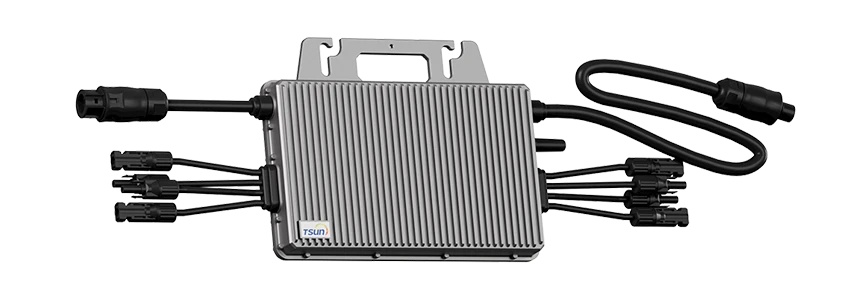The ever-evolving landscape of renewable energy solutions presents various innovations aimed at maximizing efficiency and reliability. One such breakthrough is the microinverter, a component that has redefined solar power systems. But what exactly is a microinverter, and why does it matter? Let's delve into its core functionality, advantages, and its impact on solar energy harnessing.

A microinverter, unlike its string inverter counterpart, is a compact device attached directly to each individual solar panel. This design allows it to convert direct current (DC) produced by a solar panel into alternating current (AC) at the panel level. This decentralization contrasts with traditional systems where a single inverter manages the DC-AC conversion for an entire array of panels.
The importance of microinverters in solar technology is profound, contributing significantly to the efficiency and dependability of solar power installations. They offer several advantages over traditional inverters, arguably the most significant being their ability to optimize the power output of individual panels. This micro-level optimization is particularly beneficial in scenarios where panels are subject to shading, debris accumulation, or partial dirt coverage. Each microinverter optimizes its panel's output independently, ensuring that shaded or dirty panels do not reduce the overall system efficiency—a common shortfall in traditional string systems.

Moreover, microinverters enhance system monitoring capabilities. By enabling panel-level monitoring, they allow users to identify and address issues with specific panels, rather than having to diagnose problems across entire arrays. This granular level of monitoring empowers both homeowners and commercial operators to maintain peak system performance with greater precision.
The installation of microinverters also significantly improves safety profiles of solar installations. Since they convert high-voltage DC to low-voltage AC at the panel level, the risk associated with high-voltage DC wiring is mitigated. This characteristic not only makes installations inherently safer but also simplifies the design and installation process, a benefit that appeals to both contractors and do-it-yourself enthusiasts.
what is a microinverter
In terms of longevity and reliability, microinverters exhibit impressive robustness. Manufacturers frequently offer warranties that span 20 years or more, reflecting their confidence in the devices' durability. This longevity often matches or exceeds that of the solar panels themselves, assuring consumers of sustained power generation and minimized lifecycle costs.
Furthermore,
microinverters enable system scalability. Adding more panels to an existing array is straightforward, as each new panel operates independently through its microinverter. This modularity is a boon for homeowners and businesses looking to expand their energy generation capacity without the hassle of modifying an entrenched centralized inverter system.
From an investment perspective, while the initial costs of microinverters might be higher compared to traditional string inverters, the advantages of enhanced energy harvest, ease of maintenance, and improved safety translate into attractive returns. The increased efficiency gained from minimizing shading and individual panel mismatch losses leads to higher overall energy yields, which cumulatively justifies the investment over time.
Industry experts often highlight that choosing between microinverters and string inverters should depend on the specific site conditions and project goals. Nevertheless, the growing preference for microinverters is noticeable. They are especially favored in residential applications where space constraints and aesthetic considerations might limit optimal panel placement and incline property owners to focus on maximizing every watt of solar production.
In conclusion, microinverters represent a pivotal development in solar technology, emphasizing performance optimization, safety, and flexibility. By addressing and mitigating the limitations associated with traditional string systems, they offer a compelling solution for maximizing the potential of solar energy, irrespective of various environmental and installation conditions. As the world gravitates towards more sustainable energy systems, the role of innovations like microinverters becomes increasingly significant—underscoring their transformative impact on the future of renewable energy.
 LEARN DETAILS
LEARN DETAILS



